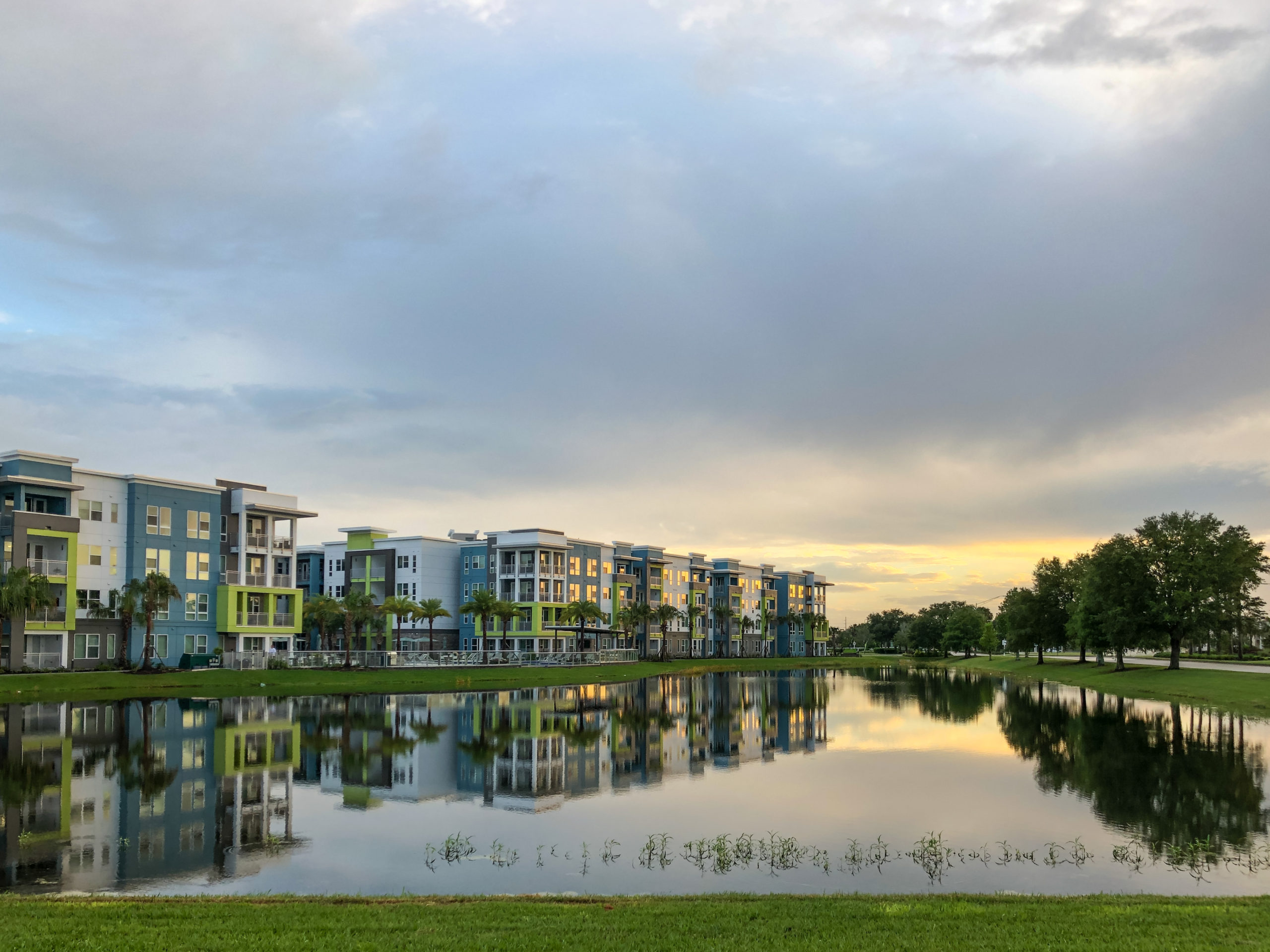Retention Pond vs Detention Pond
As our cities continue to grow, there is an increasing need to divert water. That’s because stormwater runoff — surface water that collects during a heavy rain event — is accumulating at an unprecedented pace.
In a natural environment, rainwater is absorbed by vegetation and soil, allowing only a small amount of rainwater to run off the surface of the ground and into lakes, streams, and rivers. But in an urban environment, the natural cover has been replaced with buildings, sidewalks, streets, and parking lots. As water is unable to penetrate the ground, it accumulates on the surface where it overwhelms our sewers, pollutes our rivers, and erodes our infrastructure.
To make matters worse, as climate and weather patterns change, heavy rain events are becoming more frequent and more severe.
To fix this problem, many cities have opted to build stormwater “basins” — areas that collect water during rain events — to better manage stormwater runoff.
These basins, also called stormwater ponds, come in two different (but very similar) forms — detention ponds and retention ponds. And while both are very effective means to control urban runoff, one may be better suited to handle stormwater than the other.
Click here to find our list of stormwater and environmental tools.
Stormwater Retention Pond
A retention pond — sometimes referred to as a “wet pond,” “retention basin,” or “wet detention basin” — is a pond that holds stormwater runoff permanently. Similar to a dam, it’s a means to “contain” and “hold” runoff, allowing water to build up on site. As rainwater falls to the ground, it navigates its way to one of these ponds and is permanently stored.
Depending on the amount of rainfall, a wet pond will fluctuate in depth — when there’s no rainfall, the pond will stay even with the water table. But when there’s a lot of rainfall, the pond will briefly fill up before returning to its natural state.
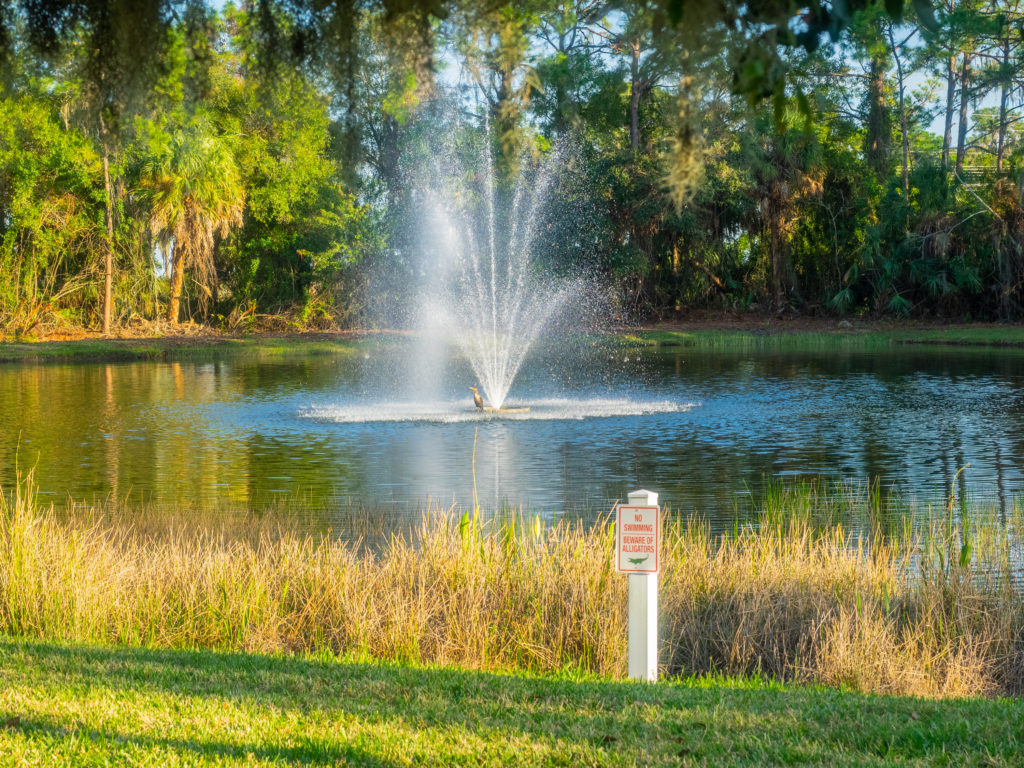
Retention Pond Design
Because retention ponds are designed to hold water permanently, they have an opening, or orifice-like drain, above the natural level of the water instead of at the bottom of the pond. When the pond becomes overwhelmed too quickly, the water will eventually overtop the outlet/drain and be released.

Retention Pond Problems: Advantages and Disadvantages
Advantages
- Vegetation acts as a natural filter that can improve water quality.
- No additional equipment is required after it is constructed.
- Can add property value to adjacent properties.
- It’s a natural means to collect and store stormwater.
- New plant and animal habitats are created.
- Can be used for recreational activities.
- It’s a natural means to collect and store stormwater.
- Can be aesthetically pleasing.
Disadvantages
- Open water is a drowning hazard for people.
- May require a large piece of land.
- Potential for negative water quality if not designed right.
- Can be more costly than a detention pond.
Stormwater Detention Pond
A detention pond — sometimes referred to as a “dry detention basin” or “dry pond” — is a sunken area (usually excavated) that stores water temporarily. When there’s a heavy rain event, the pond fills up and then slowly releases the water into neighboring areas. Unlike the retention pond, the detention pond will become dry once all of the water has been released or evaporated.
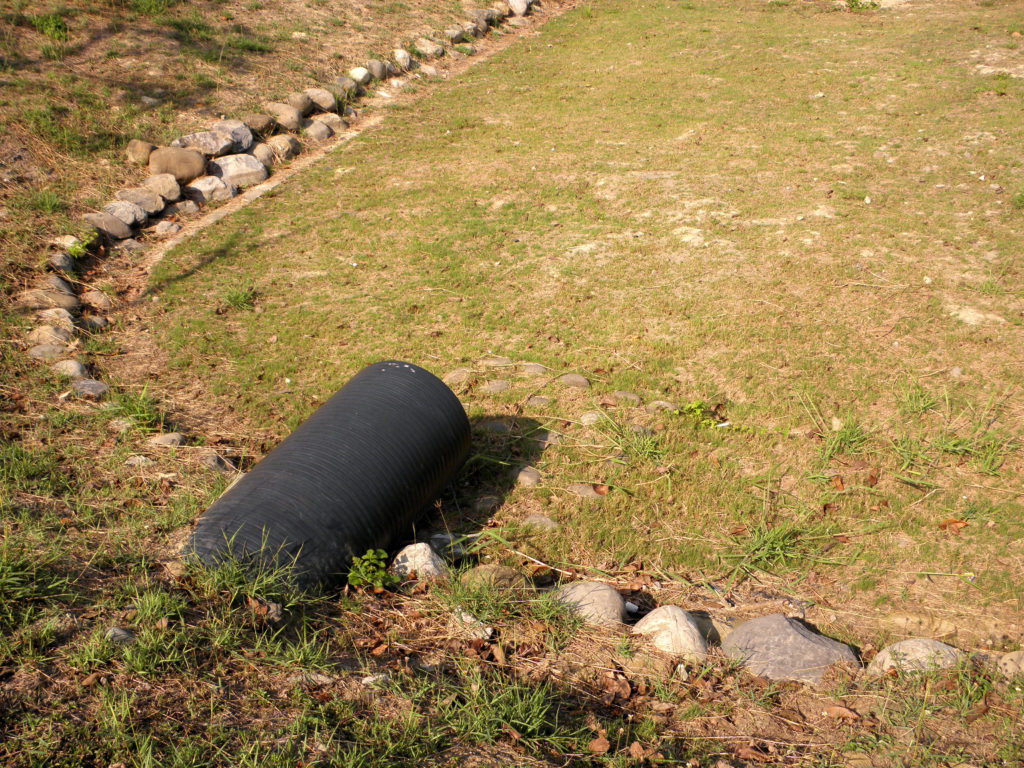
Detention Pond Construction and Design
Because detention ponds are designed to hold water temporarily, they have an opening, or orifice-like drain, at the bottom of the pond. So while it may look like a normal pond when it is filled, it will eventually release the water and become dry again.
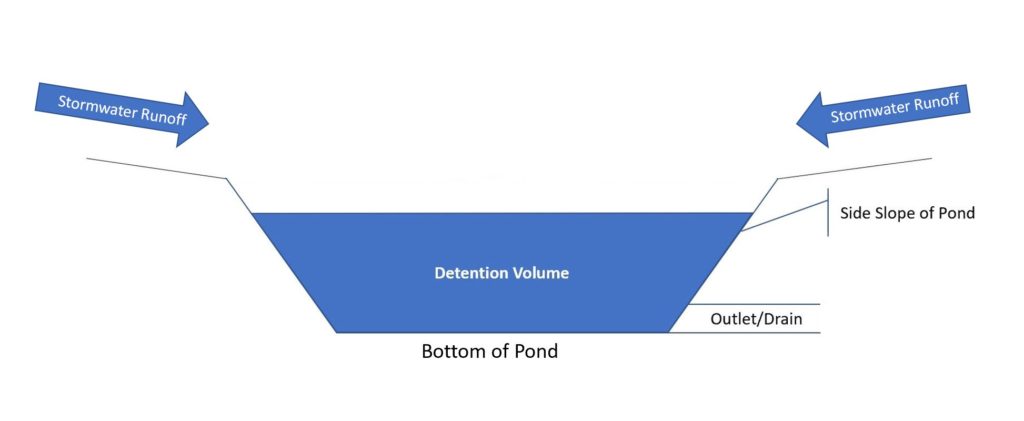
Detention Pond Problems: Advantages and Disadvantages
Advantages
- Usually doesn’t require as much space.
- Can have a multipurpose use if constructed correctly.
- Is slightly more affordable than a retention pond.
Disadvantages
- Typically doesn’t have a “natural vegetative filter” the same way that a detention pond would.
- The bottom of the pond may always be muddy or damp
- Puddling at the bottom of the pond can be bad for mosquitos
- It may not be as “aesthetically pleasing” as a retention pond.
- Can become clogged.
- May require additional maintenance.
Retention and Detention Pond Maintenance
While the detention pond may require some additional upkeep due to it having both wet and dry stages, maintenance is fairly easy for both systems.
Maintenance includes:
- Maintaining Vegetation: Most ponds will require general upkeep such as mowing and weed eating. Or, for beautification purposes, they may require regular landscaping.
- Clearing Debris: Because a detention pond has an orifice at the bottom, it must be kept clear of debris to keep the system working properly. A retention pond may also need to be inspected for debris, but less often.
- Erosion Control: Depending on how much water is received in any one event, some of the pond may erode away. This typically happens around the bank of the pond or where the soil meets a relief valve, pipe, or orifice.
- Preserve the Natural Habitat: Where there’s water, there’s wildlife. And when wildlife moves in, it’s vital that their ecosystem is preserved and cared for, especially in the event that a threatened or endangered species takes up residence.
- Maintaining Water Quality: Stormwater can bring a lot of pollutants with it. If any wildlife has taken up residence in or around the pond or if the pond experiences a lot of recreational activity, it’s important to occasionally monitor the pond for any severe changes to the water quality.
- Pest Control: Where there’s water, there are pests. Both types of ponds will bring unwanted pests with them.
Retention Pond vs Detention Pond: Which One is Better?
Based on the advantages and disadvantages listed above, it would seem that a retention pond (wet pond) is more useful than a detention pond (dry pond); however, depending on the goal or particular need of an area, one pond may make more sense than the other. This is particularly true when it comes to multipurpose uses.
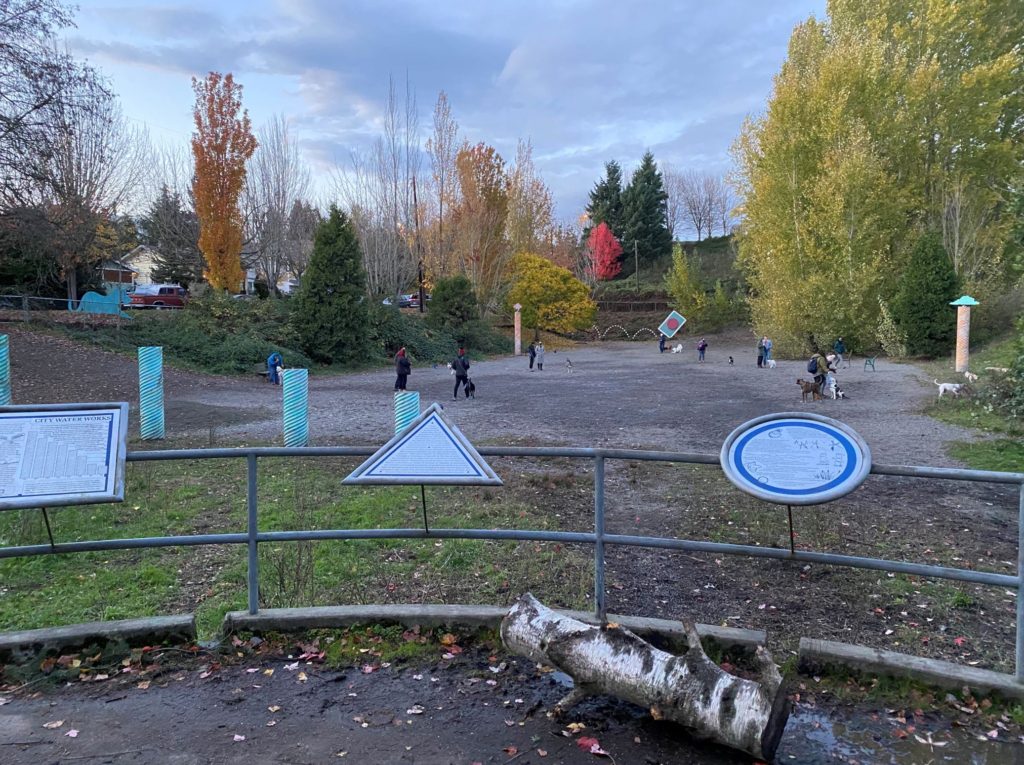
Take, for example, the Blue Dog Pond located in Seattle, WA (pictured above). In the rainy season, it serves as a catchment area/detention pond, but in the dry season, it serves as a local dog park. In this case, it makes more sense to have a dry pond because (1) the location probably isn’t favorable for a retention pond, and (2) it has a multipurpose use that wouldn’t be possible with a retention/wet pond.
So, in conclusion, both ponds will effectively manage stormwater. But, depending on the size, location, city ordinances in place, aesthetics, multipurpose uses, neighborhood concerns, etc. — one pond may be better suited than the other.
Click here to find our list of stormwater and environmental tools.

